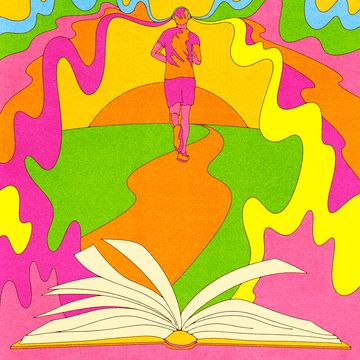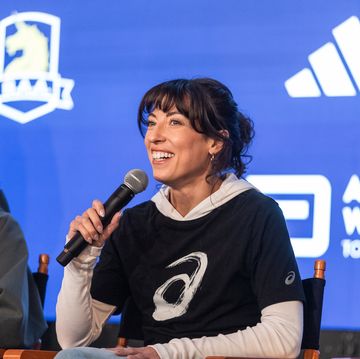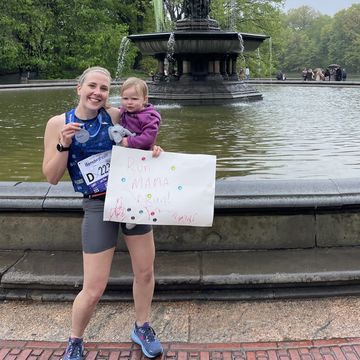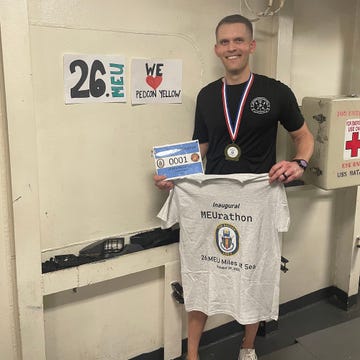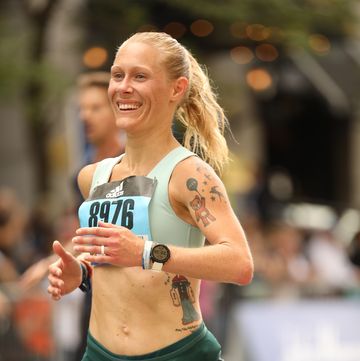Thomas Dixon thumbs his iPhone at a Philadelphia sandwich shop. Like many thirtysomethings – or many anysomethings – he scrolls through texts, checks appointments and tweets a few times during lunch.
Dixon is not just passing time: He wants to recall what he did yesterday.
So he picks up his phone, taps the Twitter icon and checks his digital memory. There, in a private account with nearly 21,000 tweets, is a log of moments in Dixon’s life since December 2010, a month after he was hit by a car while he was running and suffered a traumatic brain injury, leading to memory loss.
Throughout his recovery, Dixon’s use of assistive technologies such as Twitter has allowed him to manage – and largely mask – a severe disability. He earned a graduate degree in educational psychology from Temple University. He qualified for Mensa. He spends each New Year’s Eve exploring a different country.
And a year after the accident, he ran the Philadelphia Half Marathon in a custom shirt. My life was in question, stated the front. This is my answer, read the back.
“I live at a time where I have my emails in my pocket. I have my texts. I have so many strategies that we’re all already using,” Dixon, 30, said. “Even though I have this severe disability, it almost sounds silly to say severe because look at how well I’m living. All the technology that we use, and my ability to apply these strategies, really mitigates the severity of it.”
Dixon was visiting his parents, who live in Philadelphia’s Fishtown neighborhood, on Nov. 22, 2010, to console his mother, Tina. She had lost her father the day before and her mother 58 days before that. At the time, Dixon was a research coordinator at the Children's Hospital of Philadelphia. He was heading toward medical school to pursue his dream of becoming a psychiatrist.
Dixon, who ran a 1:22:54 at the 10-mile Broad Street Run earlier that year, practiced fencing, jujitsu and the Brazilian martial art capoeira, in addition to running recreationally.
That day, Tina and Dixon’s father, Thomas Sr., went out for lunch. Dixon went for a run he doesn’t remember.
In the accident, Dixon suffered a punctured lung and a traumatic axonal injury, one of the worst types of brain injuries. The head trauma was so powerful that his axons, the communication pathways in brain cells that allow us to carry out skills, were stretched or sheared, leading to cell death.
In Dixon’s case, his brain trauma didn’t dramatically impair his cognitive abilities. He still remained bright and talented. But two types of memory were affected – delayed memory, or the ability to retain information over periods of time, and episodic memory, or the ability to remember context from experiences.
That’s where Twitter comes in. Dixon constantly tweets episodes of his life (“Lifted weights as I had breakfast and now about to shower, shaving during” and “And I just finished hearing the most recent Savage Lovecast, having some herbal tea, and ate a pear”). He also invites commentary from friends and acquaintances, to which he hands over his Twitter account, ala a yearbook. Guest entries start with “so-and-so typing here.” Each ends with [DONE].
“This could feel insular or isolated,” Dixon said. “Handing my phone to them and letting them write something in my digital memory includes them in it.”
Dr. Max Shmidheiser and Dr. Madeline DiPasquale are clinical neuropsychologists who treated Dixon at MossRehab’s Drucker Brain Injury Center. Both said Dixon helps manage his memory loss by combining his intellectual ability and thirst for new experiences with an extraordinary comfort with technology. He isn’t just setting alarms. He’s downloading his Twitter archive and graphing word usage over time to identify patterns in his behavior.
Smartphone technology “has changed the way that services are delivered too,” DiPasquale said. “We do a lot of texting with clients to remind them of their appointments, to check in with them when they’re working. It really has increased the efficiency with which we work and the efficiency with which we deliver interventions, and it gives clients a level of freedom and normalcy.”
“It normalizes all of us,” Shmidheiser added. “All of us get to use these strategies.”
Tina Dixon uses a Facebook account Dixon set up for her. It helps them keep in touch.
“I’ve always had that degree of confidence in him,” she said. “He’s a survivor. You just go and do what you’ve got to do. That’s the way he always was.”
Dixon is hunting for jobs in educational psychology. He’s thinking about which new country he’ll visit to ring in 2015, after visiting Dubai and Abu Dhabi to start this year.
For someone so immersed in technology and so analytical with identifying patterns in his digital memory, Dixon keeps looser fitness goals – he completed a 5K recently but isn’t currently training for another race – doesn’t formally track his runs and often picks new routes to explore sides of Philadelphia he may not have seen.
But he runs two to three times a week, weight trains regularly and credits his young age – 26 at the time of the accident – and fitness level for saving his life.
Just a few weeks ago, Dixon framed a photo of himself, unconscious in a hospital bed after the accident, with a familiar caption: My life was in question. The image is juxtaposed with his 2011 Philadelphia Half Marathon medal, a shot of him after the race and his acceptance letter to graduate school, which he finished in May. This is my answer. “It felt like a sense of self return, to be running like that,” he said.




